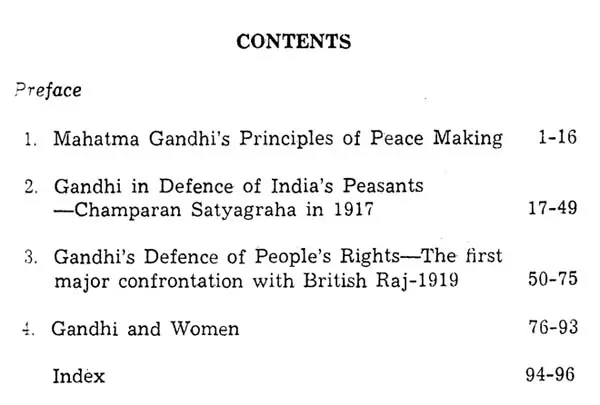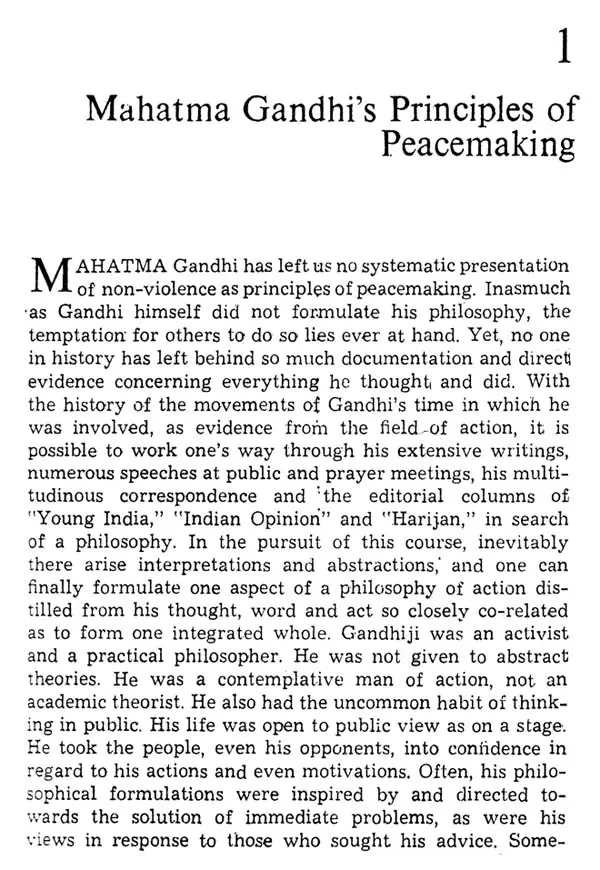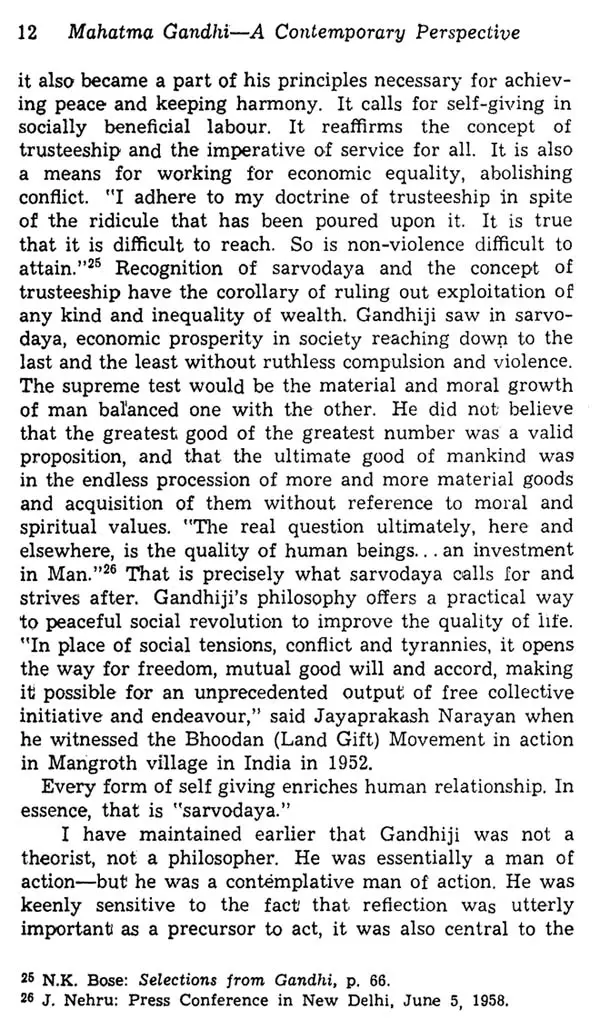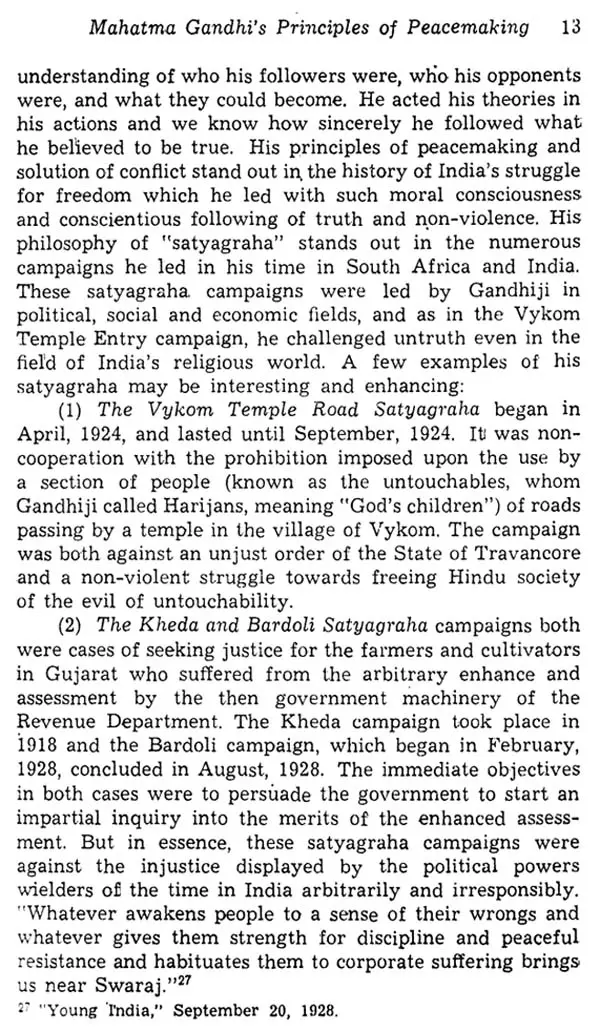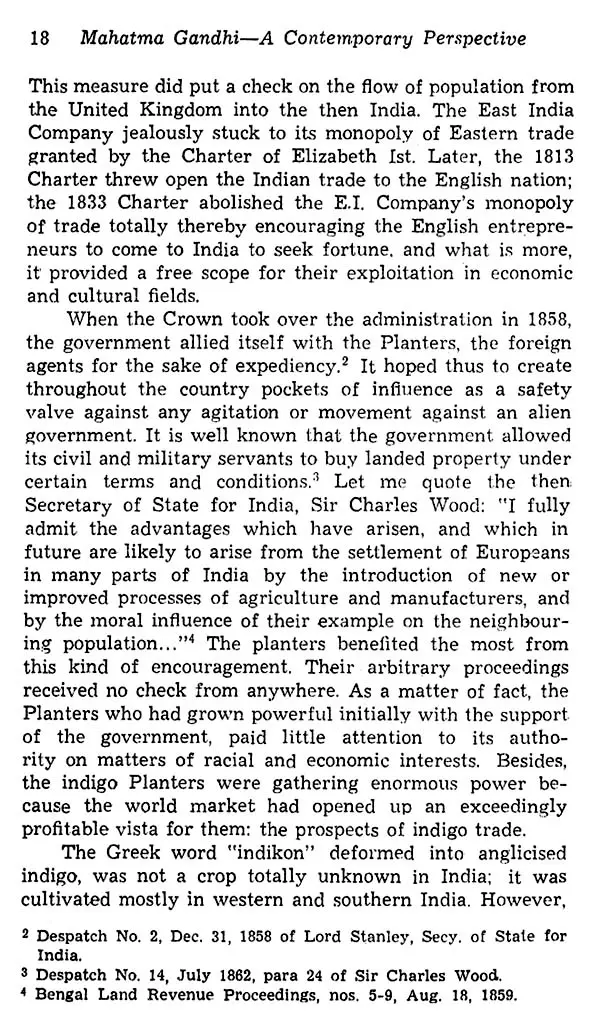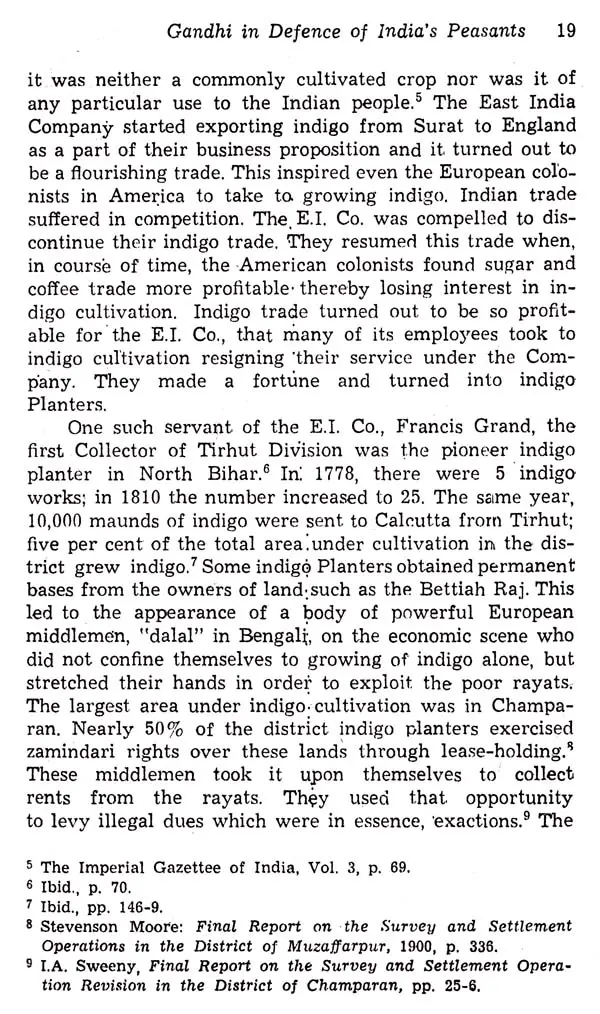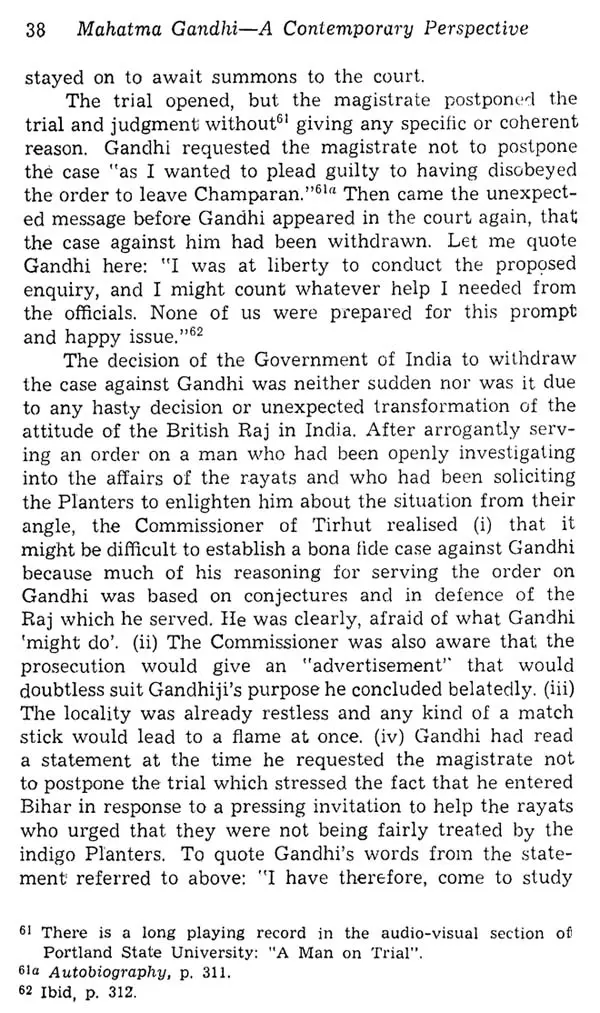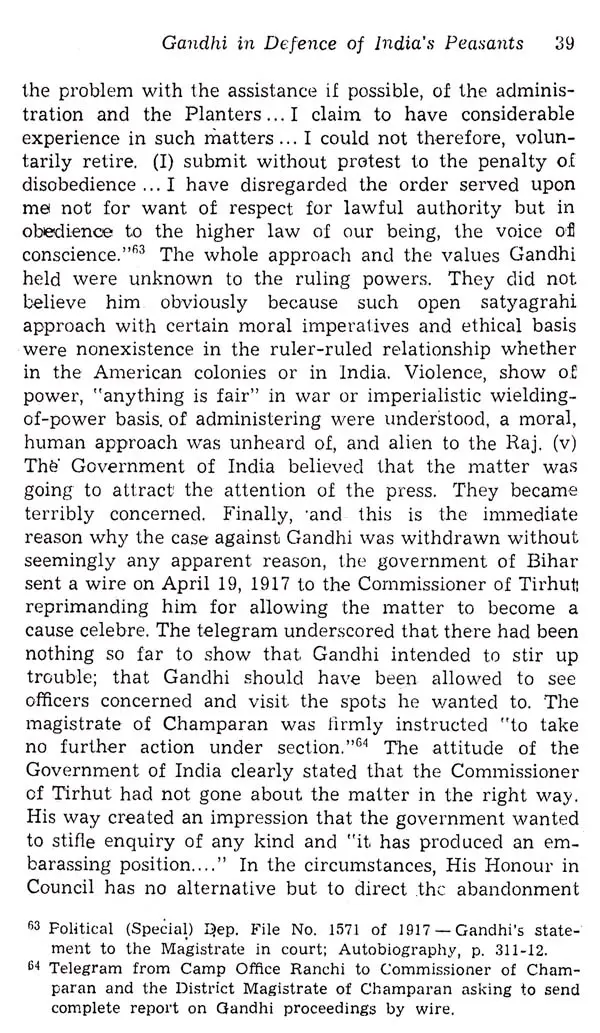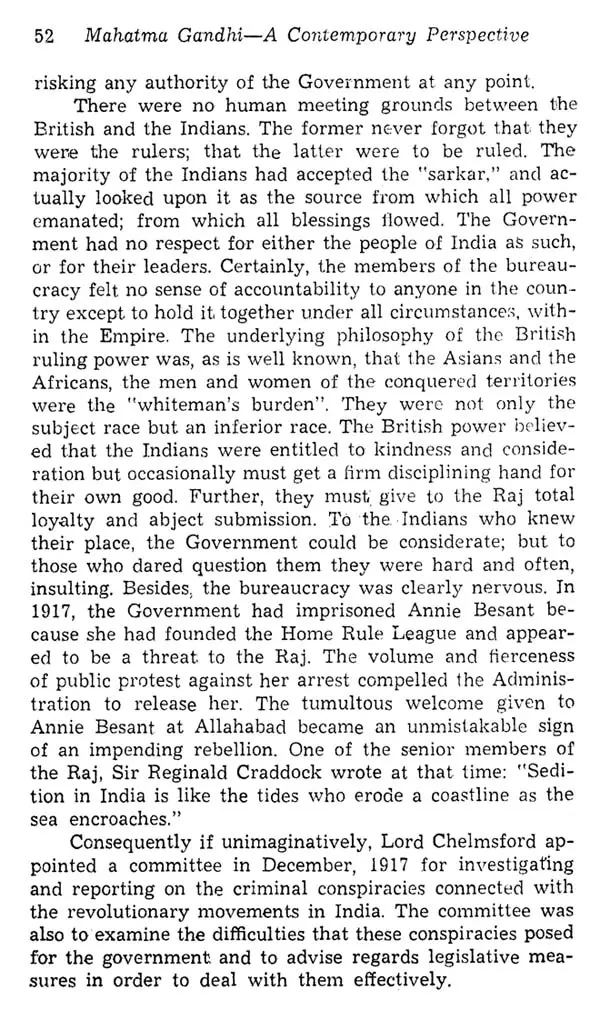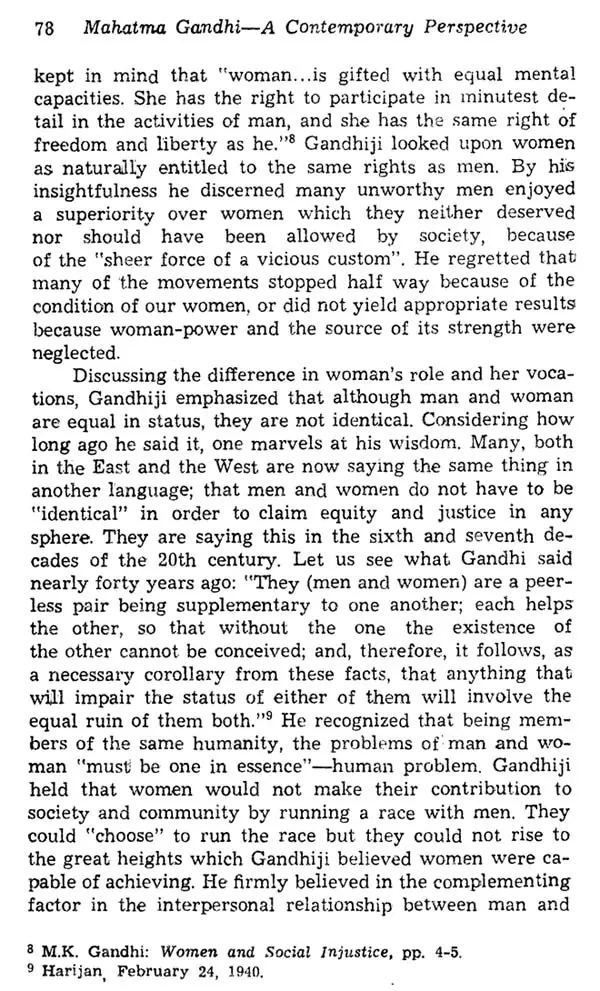
Mahatama Gandhi (A Contemporary Perspective)
Book Specification
| Item Code: | UAP972 |
| Author: | Anima Bose |
| Publisher: | B.R. Publishing Corporation |
| Language: | English |
| Edition: | 2015 |
| ISBN: | 9789350501894 |
| Pages: | 96 |
| Cover: | HARDCOVER |
| Other Details | 8.90 X 5.90 inch |
| Weight | 260 gm |
Book Description
In Gandhi's theory of peace, human values take great prominence. Nonviolence (ahimsa) is a way of life rather than a tactic, and, together with the search for truth (satyagraha), makes the difference between passive submission to injustice, and an active struggle against it. This struggle excludes both physical violence and casting the opponent in the role of enemy, and hence presupposes compassion and self criticism. The notion of welfare to all (sarvodaya) also sees peace as incompatible with exploitation or inequality of wealth. Peace is not seen as an end state, but as a continuous revolutionary process, where ends cannot be separated from means.
When in South Africa Mahatma Gandhi gave the name "satyagraha" to the unique kind of resistance he offered to injustice and inequality, he ushered in a method of enquiry and a technique of action "intended to replace methods of violence". From a contemporary perspective, it reveals itself also as a process for self-involvement and as an endeavour for engagement with "the others". To that extent, satyagraha is by nature dialectical and always directed toward conflict resolution.
In the 1920's and the following two decades, there were few precedents for this new technique. But today, after nearly five decades, we do have a perspective. We are able to analyse and evaluate.
Gandhiji was a man of action, but a contemplative man of action. It is my belief that in order to understand Gandhian thought and action, it is imperative to understand his technique of satyagraha. The prospects of today's happenings and movements can be better comprehended. once the affirmative nature of Gandhi's unique mode of action is grasped.
In three chapters of this book, I have dealt with the Gandhian way of conflict resolution, with Champaran satyagraha of 1917 and with Rowlatt Act satyagraha of 1919 all of which help the readers have a perspective not only on the Gandhian mode of action but on the greatest innovation in the realm of conflict resolution in this century.
The chapter on Gandhiji and his work for India's women becomes appropriate when it is realised that in today's India, not much advance has been made where women are concerned from the time when Gandhiji spoke on their behalf. That realisation clearly provides a disturbing perspective.
Our present was Gandhiji's future. It is necessary to rediscover the past, and to recover the past. The last three decades of this century have seen wide-spread conflict of dimensions that has placed the world on a balance of terror. The Gandhian satyagraha technique offered an alternative in his time. A contemporary perspective will infinitely help in bringing into focus a constructive alternative urgently needed in our time and day.
1 Sikandra Road New Delhi.

